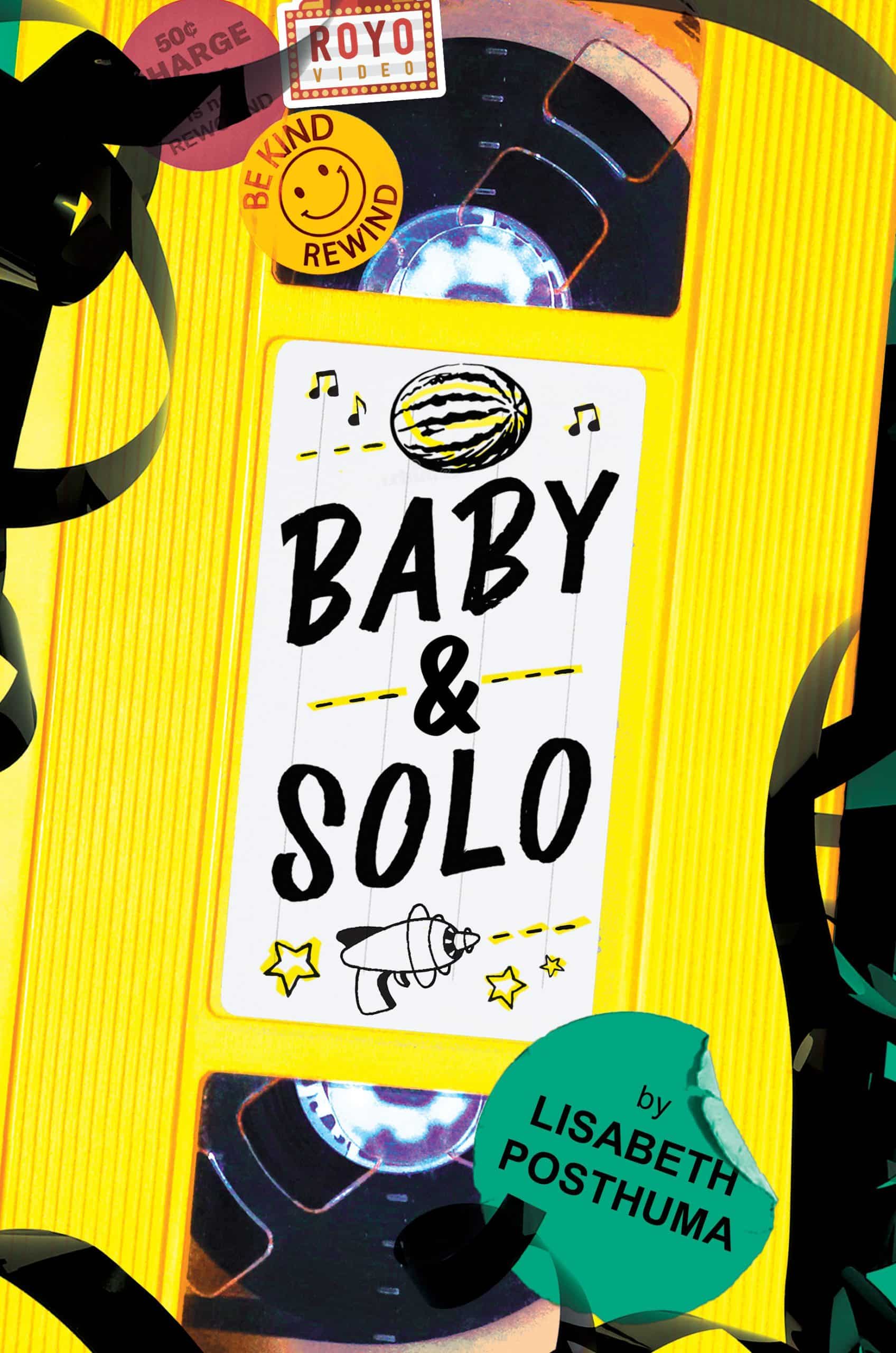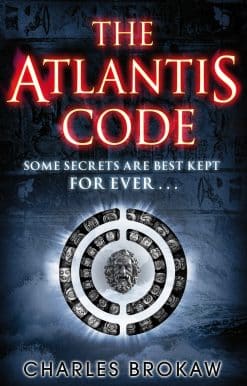Baby and Solo
| by |
|---|
15.00 JOD
Please allow 2 – 5 weeks for delivery of this item
Description
Joel’s new job at the video store is just what the therapist ordered. But what happens if the first true friend he’s made in years finds out about What Was Wrong With Him?Seventeen-year-old Joel Teague has a new prescription from his therapist—a part-time job—the first step toward the elusive Normal life he’s been so desperate to live ever since The Bad Thing happened. Lucky for Joel, ROYO Video is hiring. It’s the perfect fresh start—Joel even gets a new name. Dubbed “Solo” after his favorite Star Wars character, Joel works his way up the not-so-corporate ladder without anyone suspecting What Was Wrong With Him. That is, until he befriends Nicole “Baby” Palmer, a smart-mouthed coworker with a chip on her shoulder about . . . well, everything, and the two quickly develop the kind of friendship movie montages are made of. However, when Joel’s past inevitably catches up with him, he’s forced to choose between preserving his new blank slate persona and coming clean—and either way, he risks losing the first real friend he’s ever had. Set in a pop-culture-rich 1990s, this remarkable story tackles challenging and timely themes with huge doses of wit, power, and heart.
Additional information
| Weight | 0.63 kg |
|---|---|
| Dimensions | 3.31 × 15.88 × 23.83 cm |
| PubliCanadation City/Country | USA |
| by | |
| Format | Hardback |
| Language | |
| Pages | 416 |
| Publisher | |
| Year Published | 2021-5-11 |
| Imprint | |
| For Ages | 9 |
| ISBN 10 | 1536213039 |
| About The Author | Lisabeth Posthuma is a devotee of obscure documentaries about drive-ins, a lover of rotary telephones, and a trophy-winning champion of TV trivia. She lives in Michigan with her two parakeets, Tiki Bon Jovi and Alaska Riggins. |
In the mid-1990s, Joel Teague, at the behest of his psychiatrist, takes on a new job: video rental store clerk. ROYO Video, where all employees go by movie character names, is a fresh start…Tough issues, such as mental illness, divorce, homophobia, and emotionally abusive family members, are explored with nuance and empathy. There are moments of lightheartedness too, such as movie discussions and a Secret Santa exchange, which make the novel well-rounded and heartfelt… A strong addition to high school libraries, as it gracefully handles mental health and demonstrates a strong, platonic friendship—School Library JournalThrough work, friendship, and honesty, 17-year-old Joel confronts his difficult past and begins healing. . .The author seamlessly weaves sound psychological advice into the story through Joel’s observations about how he reacts to the behavior of his parents and cast of misfit co-workers. This sensitive, complex, and layered novel provides insight into family trauma and mental health recovery while taking readers on a journey of discovery that ends with an unexpected revelation…An absorbing story of recovery from trauma.—Kirkus ReviewsOutspoken, sarcastic Nicole makes an amusing foil to quiet, introspective Joel, and the duo’s vividly portrayed video store workplace lends an era-specific liveliness. Though the book takes place in 1996, the issues it addresses, including the lingering effects of trauma, remain relevant.—Publishers WeeklyPosthuma immerses the reader in a time capsule of 1990s pop culture, managing to keenly capture not only the feeling of growing up in that era but also the motifs of iconic films like Empire Records and High Fidelity. Despite the fun and humorous tone, the book nonetheless tackles hard-hitting topics such as teen sex and pregnancy, mental illness, and suicide with directness and empathy. This is a great read for those curious about how teens related to each other before the rise of cell phones and social media.—BooklistIn this pop culture–heavy period piece, Solo narrates his own halting, sometimes misguided emotional coming of age with an earnest, immediate voice. . . . Authentically flawed characters and imperfect connections add heft to this bittersweet workplace dramedy.—The Horn BookLisabeth Posthuma offers a blast from the past in this beautifully written, poignant novel set in 1996 at a video store, a mostly vanished community institution that will no doubt seem like an ancient relic to readers in the target audience. . . . With the finesse of a thriller, Posthuma carefully withholds the reveal about the Bad Thing, and Joel's epiphany about how he has been dealing with it, until almost the end of the novel. Against the colorful backdrop of the video store setting, the author offers a compelling portrait of two wounded souls connecting and a heart-rending tale of emotional abuse, tragedy, family trauma and healing.—The Buffalo News |
|
| Excerpt From Book | Part 1 Royal Oak, Michigan — August 1996 “I think Joel is ready,” Dr. Singh concluded. I was on the couch, sitting up because it was only my brain and not my whole body being examined. There weren’t enough chairs for us all to have one, and since I was technically still the patient, I followed rank. “I don’t know how I feel about this, Dr. Singh,” my mom said. “It doesn’t sound like there are safeguards in case of a relapse.” I hated that word. Relapse. It made me sound like a druggie. “There haven’t been any occurrences in almost two years.” He glanced at my chart to confirm this timeline, but he was right. I hadn’t had a major flare-up of What Was Wrong With Me since I was fifteen. “I think it’s time we let him try life out, Mrs. Teague.” Mom scowled. “Shouldn’t we try another medication?” “I’m ready, Mom,” I assured her, though she wasn’t asking me. I was used to that — being discussed instead of participating in the discussion. My dad said nothing, but he squeezed Mom’s hand. She sighed. “What does it mean to ‘try life out,’ exactly?” she asked. “We’re not talking about backpacking across Europe, are we?” “Is that something that would interest you, Joel?” Dr. Singh mistook my mother’s absurdity for a legitimate suggestion. “An adventure could be highly beneficial to Joel’s recovery.” Both of my parents looked horror-struck. I thought about making light of things and pretending that I’d always dreamed of running with the bulls in Pamplona, but Mom and Dad had already been through enough. The Bad Thing That Happened had happened to them, too. Besides, I disagreed with Dr. Singh. What Was Wrong With Me had been adventure enough. “I’m good to experience life on a smaller scale before becoming a world traveler,” I said, to my parents’ obvious relief. “How so?” my dad asked. If anyone invited my opinion in discussions about my mental health, it was always him. “What sounds fun to you? Would you maybe want to join a sports team?” The genericness of his suggestion proved how little my dad knew about me. “Maybe,” I answered. “We’ll see.” “It’s important to set concrete goals as you fully integrate into normal life,” Dr. Singh cautioned. “We need to have a plan in place before you all leave here today. And I’ll be following up to make sure you actually take whatever we decide the first step is.” Then he recited the words printed on the motivational poster hanging on the wall behind him: “It’s never too late to become what you might have been.” Motivational posters were staples in child psychiatrists’ offices. These posters typically featured cheesy advice splashed across scenic mountain photographs, puppies and/or kittens, or, for reasons I will never understand, Charlie Brown. Charlie Brown. The kid so mercilessly bullied by his so-called friends that he couldn’t even grow hair was somehow the (literal) poster child meant to rally the mentally ill youth of this world. His picture was usually paired with such pandering catchphrases as “Anything is possible with determination!” and “Success is up to you!” and, worst of all, “Never give up!” The “Never give up!” poster featured that heartless bitch Lucy yanking the football away from Charlie just as he’s about to kick it. In the history of Peanuts, Charlie Brown has never gotten to kick that goddamn ball because Lucy always, always pulls it away. But, you know, “Never give up!” My father turned to Dr. Singh. “What do you think of him getting a job? Something part-time with other kids his age?” “That’s a great idea,” my mom agreed, shockingly. Without consulting me, the doctor said, “That sounds perfect. Let’s aim for it!” “OK.” I shrugged, climbing onto the bandwagon. A job did appeal to me more than sports. For one thing, I’d be getting paid. Plus, a job felt like less of a commitment. If you quit a sports team, you were considered a wuss, but people quit jobs all the time, and no one cared. That was Normal, and let’s be honest, Normal was the ultimate goal. I used to be Normal, after all. Maybe all that remained between me and being Normal again was providing goods or services to my peers for minimum wage for a while. It was worth a try. “I’ll spiff up my resume.” Everyone was all smiles after this, though I knew my mom’s was forced. The doctor gave me a two-week deadline to set up an interview. He wrote this on a prescription pad and handed it to me like it was an antibiotic for a bacterial infection. I thanked him, and we left his office. It was the first time in seven years that I thought that someday I might not have to come back anymore. |
Only logged in customers who have purchased this product may leave a review.
Related products
-
On backorder 2-5 Weeks to Arrive
16.99 JOD -
On backorder 2-5 Weeks to Arrive
16.95 JOD -
On backorder 2-5 Weeks to Arrive
Your Corner Dark
Hardback
14.99 JOD -
On backorder 2-5 Weeks to Arrive
17.99 JOD





Reviews
There are no reviews yet.